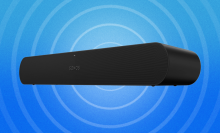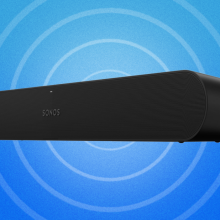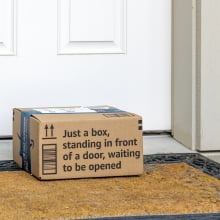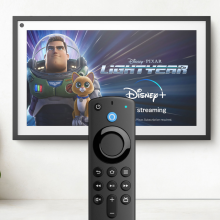The information contained in this article is not a substitute for, or alternative to information from a healthcare practitioner. Please consult a healthcare professional before using any product and check your local laws before making any purchasing decisions.
Sealed Lips is Mashable’s series on pelvic pain, an experience rarely discussed but shockingly common.
In the throes of my pelvic pain, I would've dropkicked anyone who told me that it's "all in my head."
But what if there's some truth to that?
I'm not saying my pain or anyone else's is at all fake or "made up." With the amount of money and energy I've spent coping with my pelvic pain (and writing about it!), it's as real as anything else I've ever experienced.
What exactly is pain, however? Why do we feel it? Why and how does it become chronic? These are all questions explored in Curable, an organization that helps chronic pain patients. Curable describes itself as a "different approach to your pain." Rather than being a medication or physical treatment, its app delves into the brain science of pain in order to alleviate it.
What is the Curable app?
Curable helps its over 500,000 users with a "biophysiosocial" approach to chronic pain relief, according to a blog post about stress and chronic pain. "We built our program on the same principles and techniques that have shown significant results across clinical studies," the post states. "These methods are used by leading physicians, specialists, and psychologists at institutions like Mayo Clinic, Johns Hopkins, Stanford, Northwestern, and NYU — many of whom helped us to build the Curable program."
Curable describes itself as a "different approach to your pain."
"We educate people about the brain's role in persistent pain," Curable CEO and co-founder John Gribbin told me. "We hope we are empowering individuals to gain more control, gain more understanding of their symptoms. Then through that, alleviate the symptoms and feel better, and then gain increased quality of life."
In other areas of my life, I've seen positive benefits from learning about how the brain works and how my thoughts impact my life. I've been through cognitive behavioral therapy or CBT, the core of which says that psychological problems are at least in part caused by unhelpful thoughts and unhelpful behaviors. CBT has helped me with interpersonal conflicts and encouraged self-reflection, which eventually boosted my self-esteem.
Additionally, I'm an advocate for meditation and believe in its benefits. Meditating has helped me be a more mindful eater, for example.
I've also tried many "tangible" treatments for my pelvic pain, including physical therapy, Valium, and injections. While the pain is much more manageable now, I still experience flare-ups or days where my pelvic area bothers me.
When I stumbled upon Curable through Facebook groups and other online anecdotes, I was curious — but skeptical. Sure, CBT and meditation helped me see that my thoughts — say, about what a date thinks about me — aren't straight-up facts. But how could this help me with pain, which is a very real fact of my life? I had to try Curable out for myself to find out.
How much is Curable? and how does it work?
Currently, the subscription is $4.99 a month, and no health insurance is required.
It's a simple and intuitive app. You're guided through the program by Clara, a "virtual pain coach" who functions like a chat bot. To watch how Clara works, there's a demo on Curable's website. While you can try some sample lessons as well, you must purchase an annual subscription to fully experience Curable.
The first lesson in Curable, Updating Your Facts about Pain, dives into scientific advancements of pain. We now know, for example, that pain isn't purely physical. Factors like your environment, socialization, thinking — all of that goes into pain. Rather than being processed in the pain area, pain is processed in the brain and the nervous system.
Your body's pain response is individualized to you, and can change over time. This is great news, because just like CBT and meditation can be used to help you change other areas of your life, similar brain techniques and tools can help lessen your pain.
I know, it sounds too good to be true. But it's evidenced-based science. Curable does a great job at citing their sources for their lessons, and here were two helpful ones from this lesson: The Role of Psychosocial Processes in the Development and Maintenance of Chronic Pain and Effective treatment of chronic low back pain in humans reverses abnormal brain anatomy and function.
Curable has four types of exercises: brain training; education; meditation; and writing. Each time you open the app, Clara gives you a choice of which one you want to choose that day (if she finds you're choosing the same type too much, she'll encourage others). All the exercises you've already completed are displayed on a page called Roadmap, which is a descending list; you can easily star your favorite lessons and revisit them later. At the top of the menu, you choose your next one as well.


On the top right of the Roadmap, there's a lightning bolt that acts as a "panic button," to be used when you're in pain or experiencing high anxiety. Clara guides you through deep breathing, and then provides some techniques for quick help — such as pep talks, visualization, and a "panic-busting" audio designed to calm you down during a panic attack.
The top left hand corner has a menu with episodes of Like Mind, Like Body, Curable's podcast; recovery stories; "Ask a Therapist" interviews; as well as tech support and settings. Curable also has a private Facebook group with almost 12,000 members for peer support.
Gribbin, along with co-founders Erich Luedtke and Laura Seago, started Curable because they themselves lived with chronic pain for years. Gribbin dealt with back pain, which he discussed in detail on an episode of Like Mind, Like Body. He dealt with the pain, including a diagnosis of Degenerative Disc Disease, for over a decade before discovering the brain's role in pain.
Learning about pain science didn't make Gribbin' — or anyone else's — pain overnight. Rather, it's an ongoing process just as any other treatment. Over the course of a year, Gribbin went from someone bedridden for a weekend due to back pain to someone who no longer considered himself a back pain sufferer.
Tips for making the most of the app
Gribbin shared some tips his team encourages to get the most out of Curable's program. The first: don't go too fast. These lessons and exercises are bite-sized (the longest they've taken me is a half hour, and that was a writing exercise; the shortest was a four-minute audio lesson), but they pack a punch with scientific information that may take some time to sink in. Go at your own pace, even if you think it's "slow." Curable shouldn't be adding to your stress; that wouldn't be good for pain.
"We encourage people to relax and enjoy the journey, rather than speed racing to the finish line," said Gribbin.
Another tip is to repeat exercises, and I've found this helpful myself. Repetition helps to fully absorb new information. Further, as you go through Curable, you may — like I have — develop favorites that you want to revisit. "Many of our users have found one or two exercises or lessons that are their go to exercises, and they just do those when they have flare ups," said Gribbin.
Different tools work for different people, Gribbin assured. He himself has found journaling helpful during flare-ups.
There's no magic solution to rid of chronic pain — but tools help
As one of the co-founders still deals with pain from time to time, I still deal with pelvic pain a month into using Curable. The app isn't a magic pill that will erase all your chronic pain. Maybe that's why it's called curable and not cured. That's because there aren't any magic pills to make pain go poof — even painkillers can have severe, sometimes deadly, side effects.
While I still experience pain sometimes, Curable has helped me in a myriad of ways. The program utilizes techniques similar to those in CBT to reframe how I think about my body and pain. The brain training exercises are some of my favorites, because they offer me simple techniques to create more helpful thoughts about my pain.
This doesn't fall into the trap of toxic positivity, where we try to push away "negative" thoughts in favor of "good vibes only" (spoiler: that doesn't work). Curable affirms and validates one's physical pain as well as the mental pain that can arise from it. Even changing words without changing the meaning behind it, for instance, can make a difference. For example, instead of saying "my pelvic is in pain," I could say, "my pelvis isn't as soothed as I'd like it to be." These phrases essentially mean the same thing, but the latter isn't nearly as harsh-sounding.
After using Curable for a month, I feel more knowledgeable about my own body and mind, and how both function in humans generally.
Choosing education provides short audio-based lessons about specific topics that relate to pain. Each audio lesson comes with a transcript, as well, for accessibility. Topics are wide ranging, from new developments in pain science to how people pleasing and forgiveness can actually impact pain. After using Curable for a month, I feel more knowledgeable about my own body and mind, and how both function in humans generally.
Writing includes journaling prompts. While that doesn't necessarily sound relaxing, journaling itself has a wide range of benefits. Getting your fears, hopes, whatever on the page can work wonders. I found the prompts, such as writing (but not sending!) a letter to a loved one, cathartic. It can be difficult to do in the moment but I feel better afterwards, like a great therapy session.
Meditation is pretty self-explanatory and as stated above, I've already seen the benefit of meditation in my life. I was excited to jump into these, and I wasn't disappointed. I found Curable's mediations calming and relatable, like the instructor knows what I'm going through with my pain (because they do).
In technical terms, the app is easy to use and seamless once you login. Besides one instance where an education track wouldn't play on my headphones, I haven't had any issues with it.
While we choose which skill we want to work on that day, Clara chooses the specific exercise; she does this by asking questions after we complete the exercise of the day, such as if we enjoyed it or found it useful. She logs which ones resonate, and over time makes more tailored choices for the next exercise. Curable has hundreds of exercises, and Gribbin said they're always updating to make the app better for users.
Is it worth it?
Just like other treatments for my pelvic pain, like yoga poses and my pelvic wand, Curable is another tool in my arsenal to relieve my pain. It didn't help me overnight and it didn't completely eradicate my pain, but those are both impossible. I have no intention of stopping Curable, and I'll reassess once my year-long membership is up.
Curable is a great self-care program that guides you to relief from the pain "in your head" — and everywhere else in your body.
Read more about pelvic pain





















